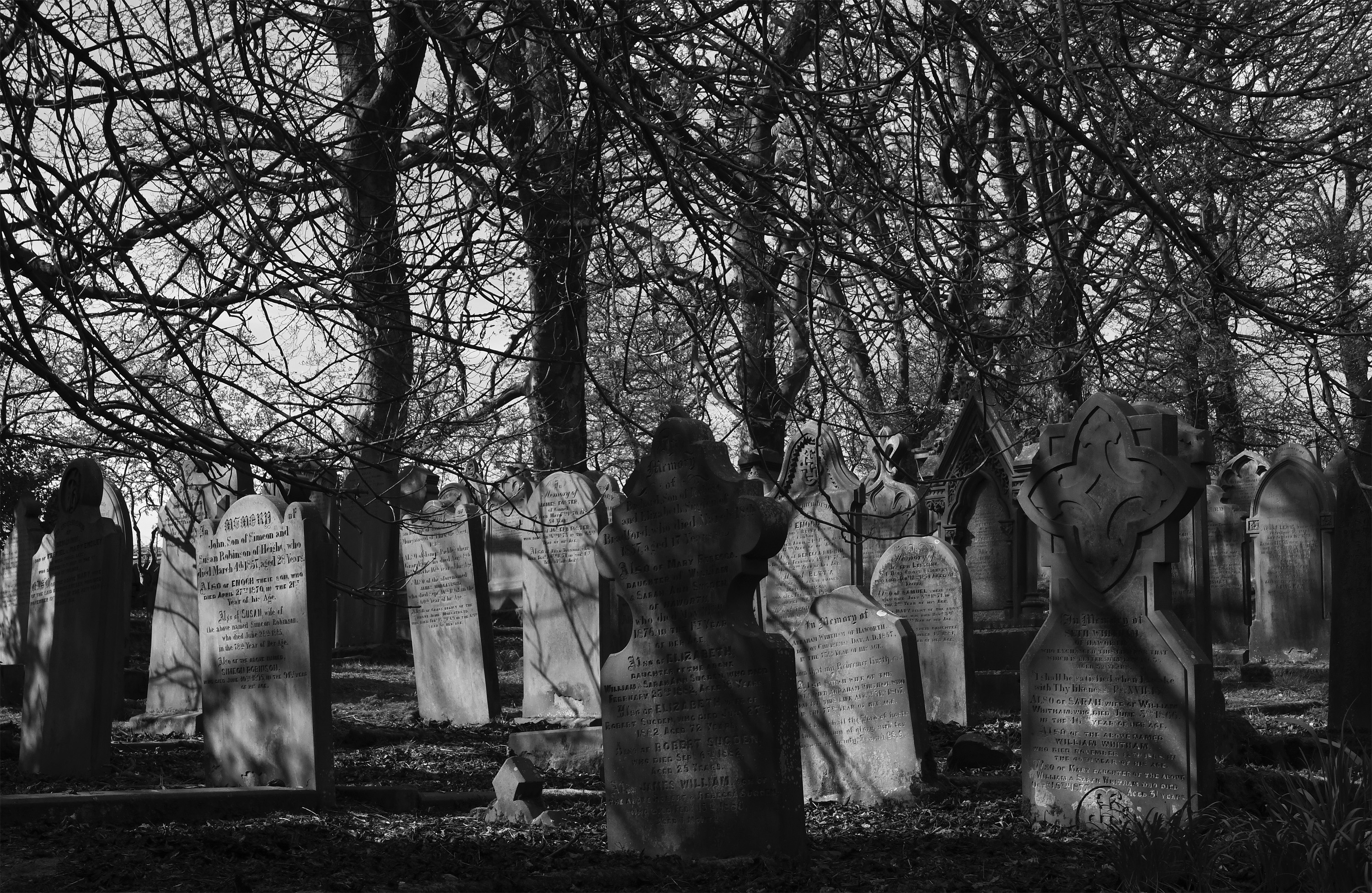The sheep at Top Withens are evil. I say this without a word of exaggeration or hyperbole, and have learned to beware their very presence. Being so accustomed to the perpetual drip-drip of visitors, from Haworth, from Stanbury, from Heptonstall, they have become tame – no, fearless – to the point of sociopathy. They will take the sandwich from your hand without a second thought and stand before you whilst they eat it. They will harass small children, friendly dogs, hikers and foreign visitors alike and will ultimately claim Top Withens as their own. I wonder sometimes if Emily Brontë did not take as the model for the sadistic and vengeful Mr Heathcliff one of these ovine inhabitants of Haworth Moor with their demonic yellow eyes and curling horns.
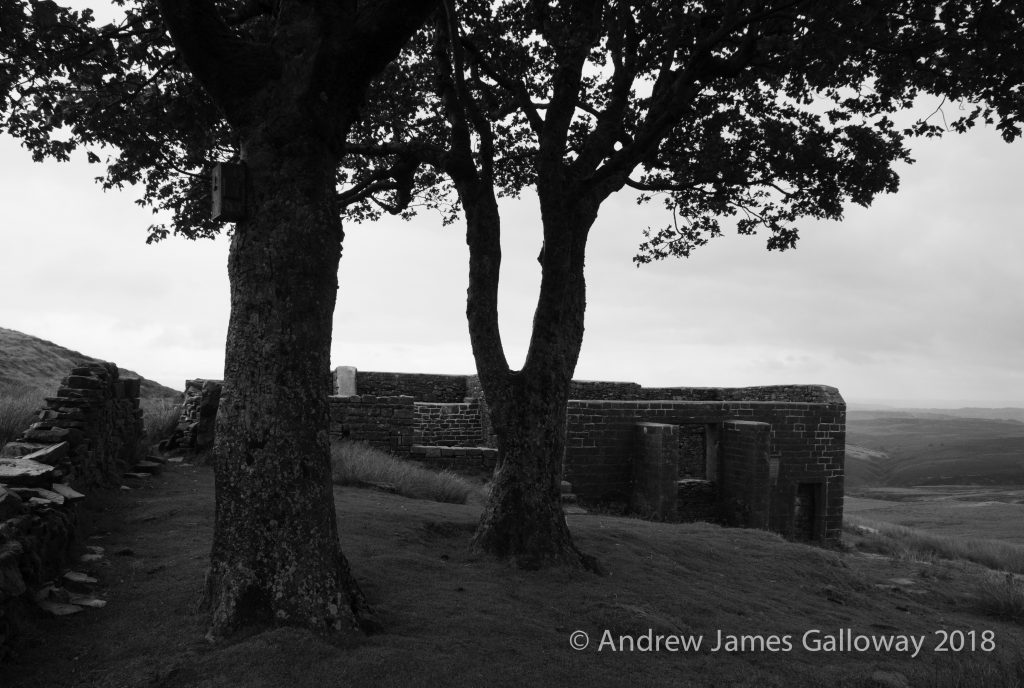
Perhaps it is the sheep that imbue Top Withens with its maleficent energy. Perhaps it is the location, its foundations higher than the grasstops. Perhaps it is the north wind blowing over the edge that begins to invoke the spell; a conjugation of myth, history and fiction, an association of memories from our own lives and the lives of others, weaving these disparate strands together as the Sunderland family wove the strands of wool from their own and their neighbours sheep to produce a thick, hispid material. Or perhaps it is simply a human instinct to see patterns in the landscape: faces in the rocks, voices in the wind, and stories in the ordinary lives of the hill farming families. But the patterns are seductive, drawing us in, until the landscape is transformed by our imagination and the patterns take on a life of their own.
Beyond Delf Hill, the plateau of moorland stretched out before me to the north and west. On the high expanses of the moor, distances become elusive, and it can be difficult to determine scale. I walked for almost a kilometre across the ling heather and tussocks of cotton grass with little alteration in elevation and without passing anything higher than my kneecaps. In low cloud it is remarkably easy to become disoriented and lost on the high moorlands, as the uninitiated and poorly prepared often discover. Thankful of good visibility, I was able to use the considerable scattering of frost shattered, wind-eroded boulders known as the Alcomden Stones as a visual guide. The intricate shapes and patterns made on these stones by thousands of years of wind, rain and ice suggest human involvement in their creation, a pre-historic Henry Moore perhaps. A precariously positioned rocking stone is thought by some to be a Bronze Age cromlech, known by common association as a Druidic altar for dubious sacrifice, whilst others believe the precarious stone to be a result of post-glacial erosion. I am of the former persuasion for I believe the Alcomden Stones to be a liminal zone, a place where the veil between the material and the spiritual realms is perceptibly thin, or at least perceptible to some.
Just below the cantilever in a cleft, where two of the boulders have fallen together, a tiny shelter had been fashioned by the construction of a small dry stone wall to close off the gap beneath the boulders. Judging by the extensive growth of Cladonia floerkeana, or the Devil’s Matchsticks, on the wall, it had been in place for some years, possibly having been used as a shelter for shepherds or gamekeepers caught in bad weather on the moor. Given the sheet of polythene spread out inside the cavity and a discarded, rusted gas container, someone had spent the night there not too long ago. I put the gas container in my rucksack to dispose of later.
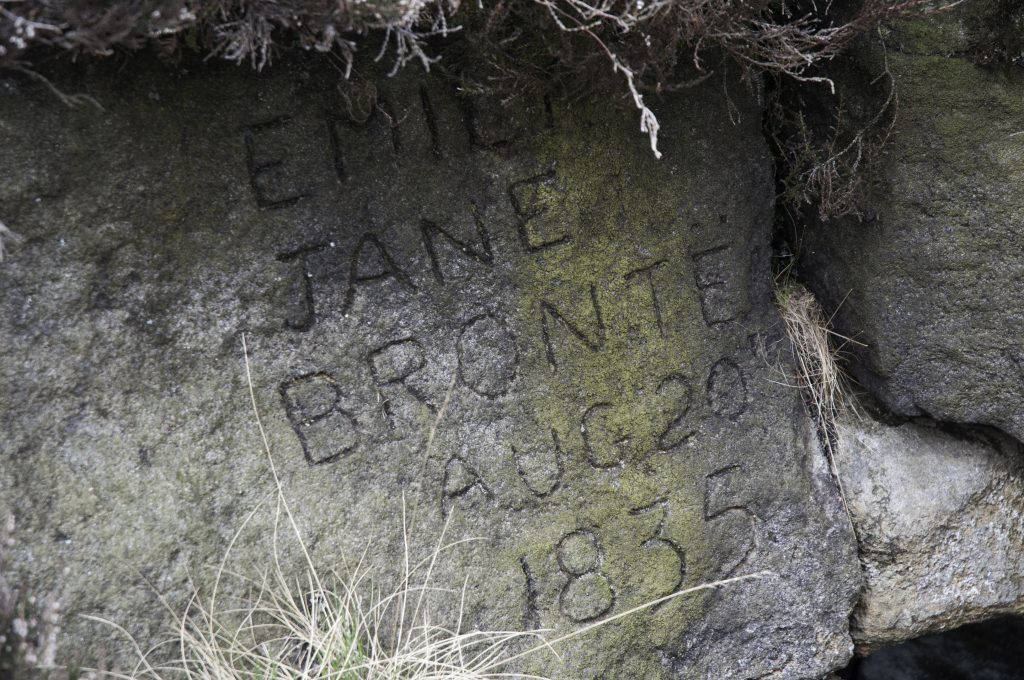
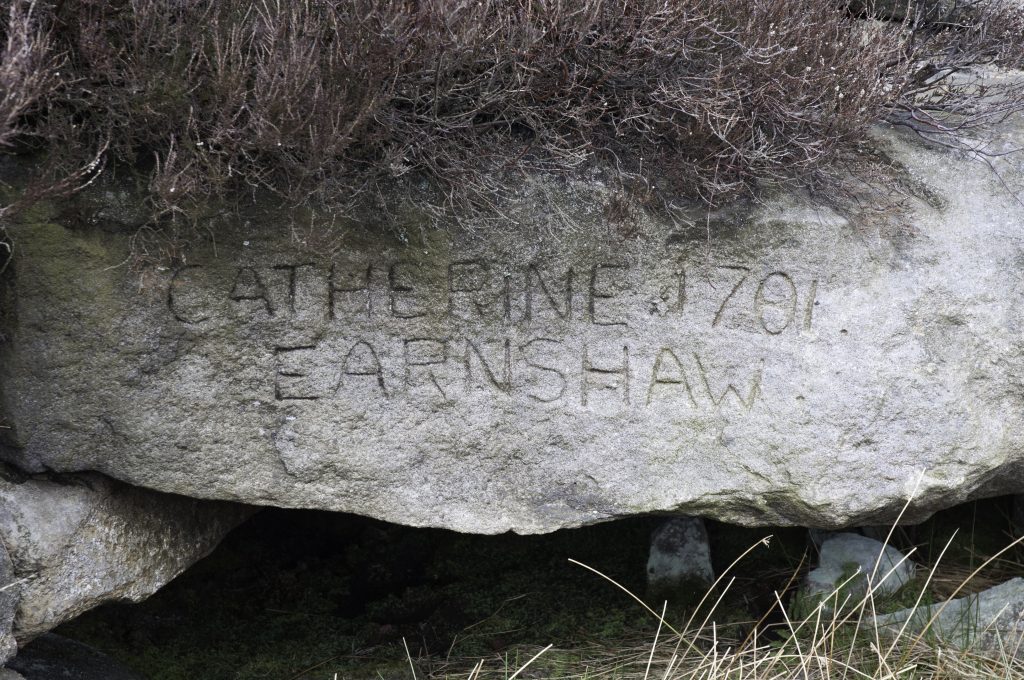
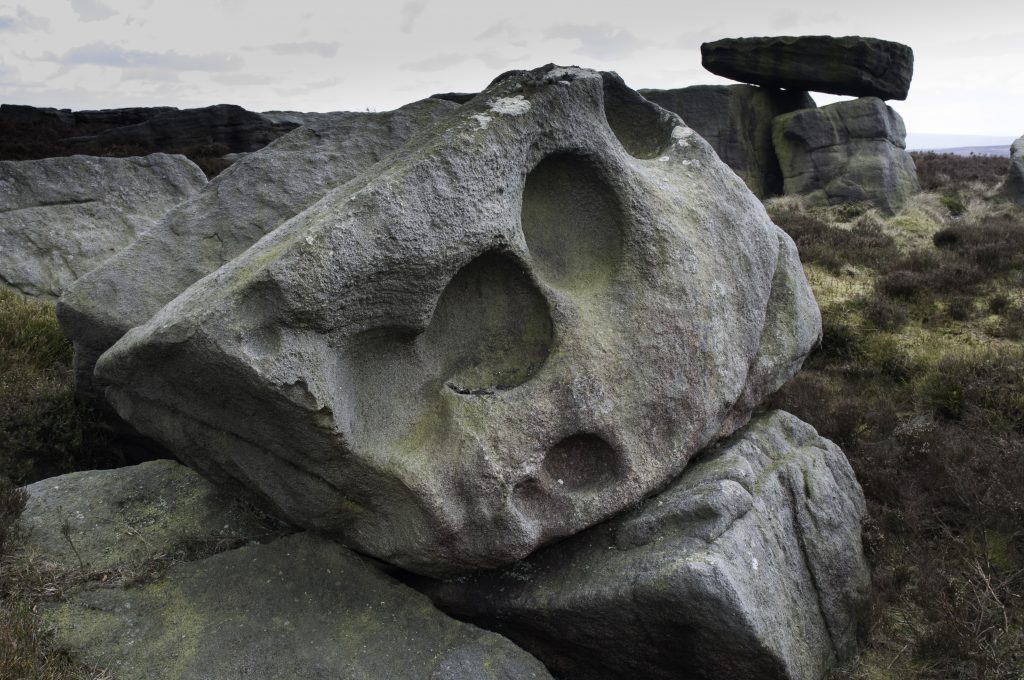
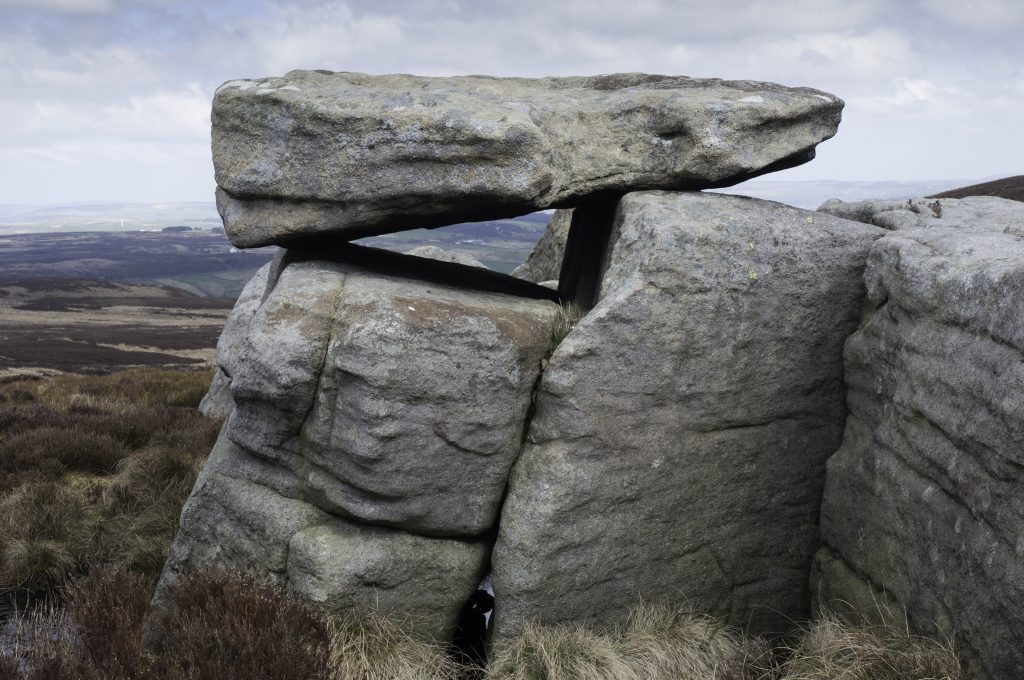
The Alcomden Stones, Haworth Moor
To the west of the Alcomden stones, a shallow trench marked the same constitutional boundary I had stumbled upon by Oxenhope Stoop Hill. I followed its line, passing a number of shin high boundary stones marked “KC 1902” indicating the purchase of the moor to the east by Keighley Corporation in that year. A mile or so northwest the trench meets the county boundary of Lancashire and Yorkshire as it transects from west to east before making a sharp turn to the north at a curious feature known as ‘the Lad’. Whether boundary stone or monolith, the hefty gritstone tooth protruding from the moor solicits a choice from passers by, being engraved in capitals “LAD OR SCARR ON CROW HILL” an act of vandalism thought to originate from an 18thCentury boundary dispute. Curious to see what I might find I headed out across the Wage of Crow Hill onto Stanbury Bog, finding it much less saturated than expected, undoubtedly the result of much improved drainage, introduced to encourage the growth of heather, which prefers dryer soil, for the convenience of the grouse and the shooting parties that come in pursuit of that comical little bird. Half a mile or so south of ‘the Lad’ I came across a natural drainage channel and a considerable depression in the peat, devoid of heather, which bore more than a passing resemblance to Patrick Brontë’s description of the site of the 1824 “phenomenon”, albeit somewhat reduced in depth by the accumulation of peaty material from the surrounding moor over the course of almost two hundred years.
“a part of the moors in my chapelry … sunk into two wide cavities; the larger of which measured three hundred yards in length, above two hundred in breadth, and was five or six yards deep.”[i]
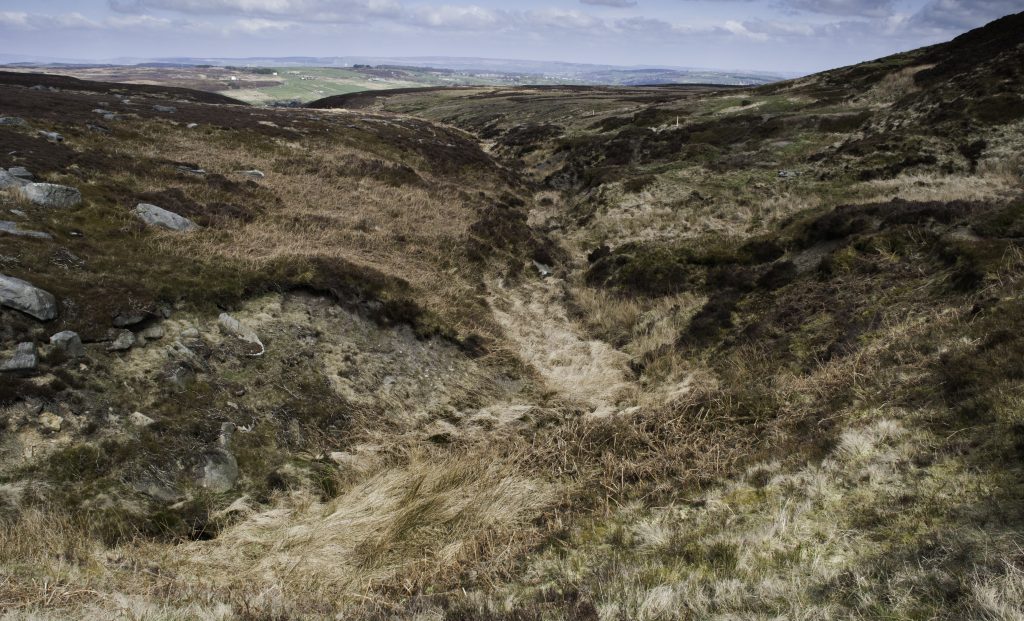
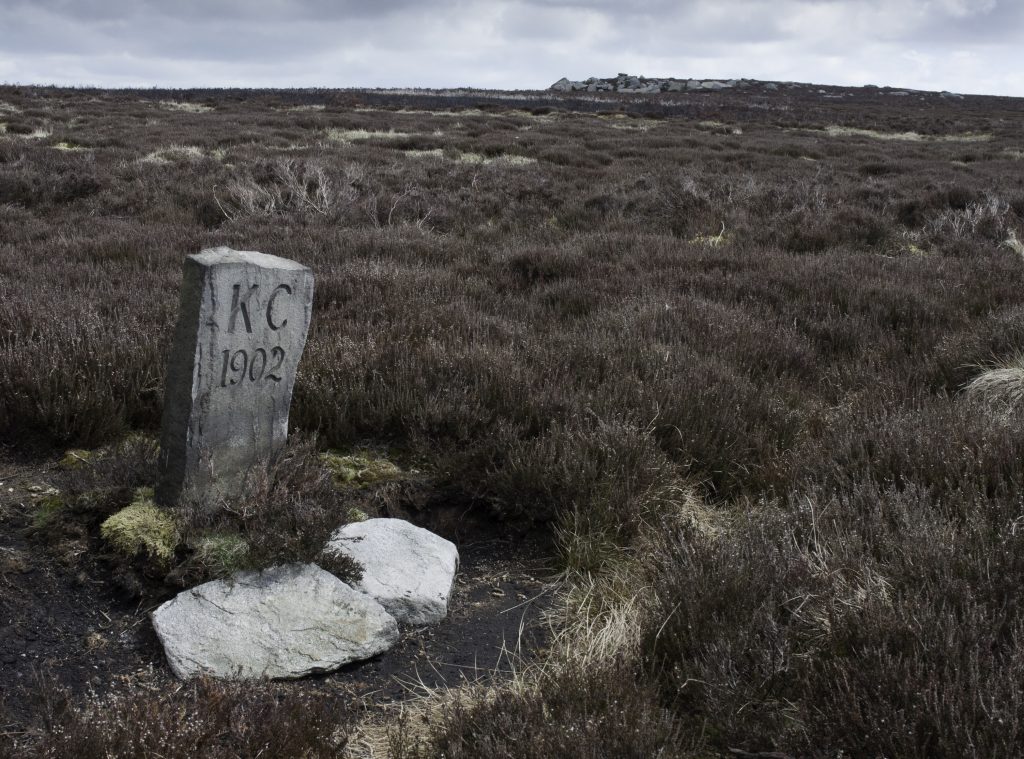
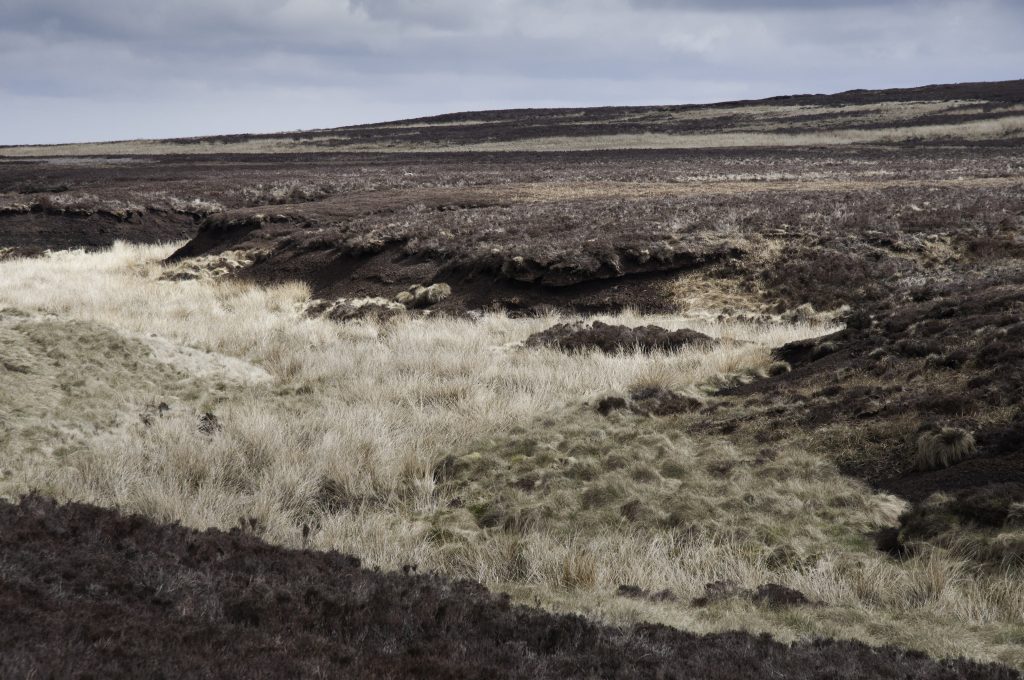
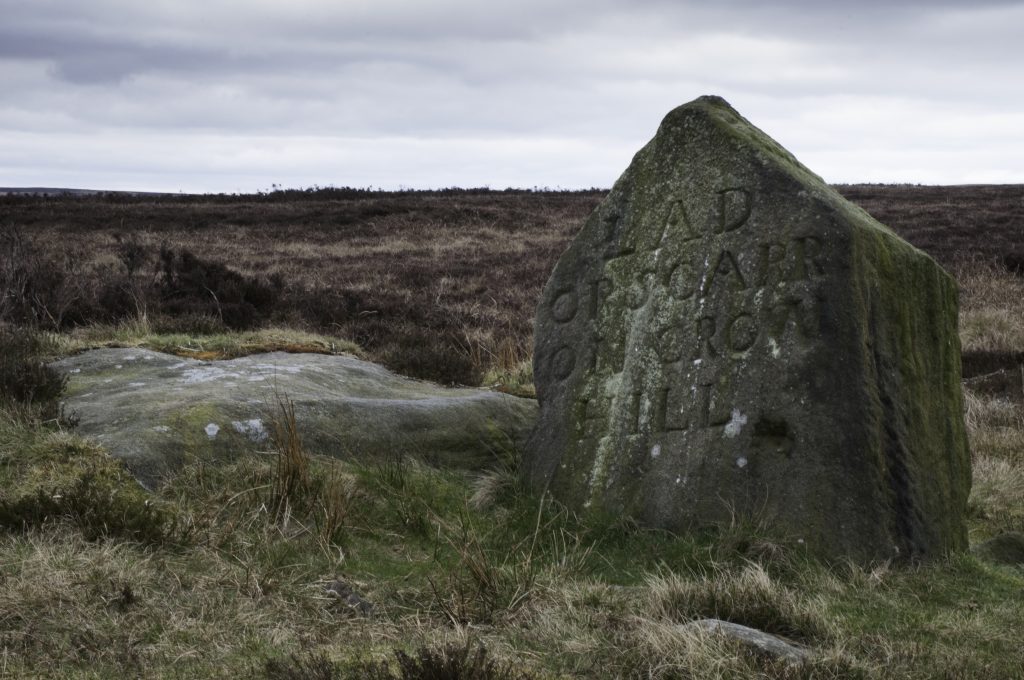
Crow Hill, possible location of the 1824 Stanbury Bog Burst
Harwood Brierley gave an account for the Leeds Mercury in 1928 of a visit to Stanbury Bog in the company of local quarry man William Kay. Brierley noted how “the very top of the bog bore evidences enough of primeval forest land … to my astonishment I beheld piles of firewood representing some hundreds of pine, fur (sic), and oak trunks or roots, some still fast in the bogland … and was informed that the lot had been exposed to view by the disruption of 1824, being the remains of a Roman Forest.”[ii] On the day I made my journey to the “swamp of Wuthering Heights”, the “piles of firewood” were nowhere to be seen, perhaps long ago removed by local inhabitants, although I did stumble upon a small exposure of preserved tree material in the peat, possibly giving credence to this heather-less depression as the site of the afore mentioned eruption.
To the west the sun was lingering above the outline of Boulsworth Hill and I resolved to abandon my explorations for the day and head via Bracken Hill down to Ponden Hall. Passing by the old house I glanced up at the tiny mullioned window in the east gable where it is said Emily Brontë took inspiration for the appearance of Cathy’s ghost to Lockwood and for a brief moment thought I glimpsed a child’s face pressed against the glass. A trick of the light no doubt or a product of my over active imagination.
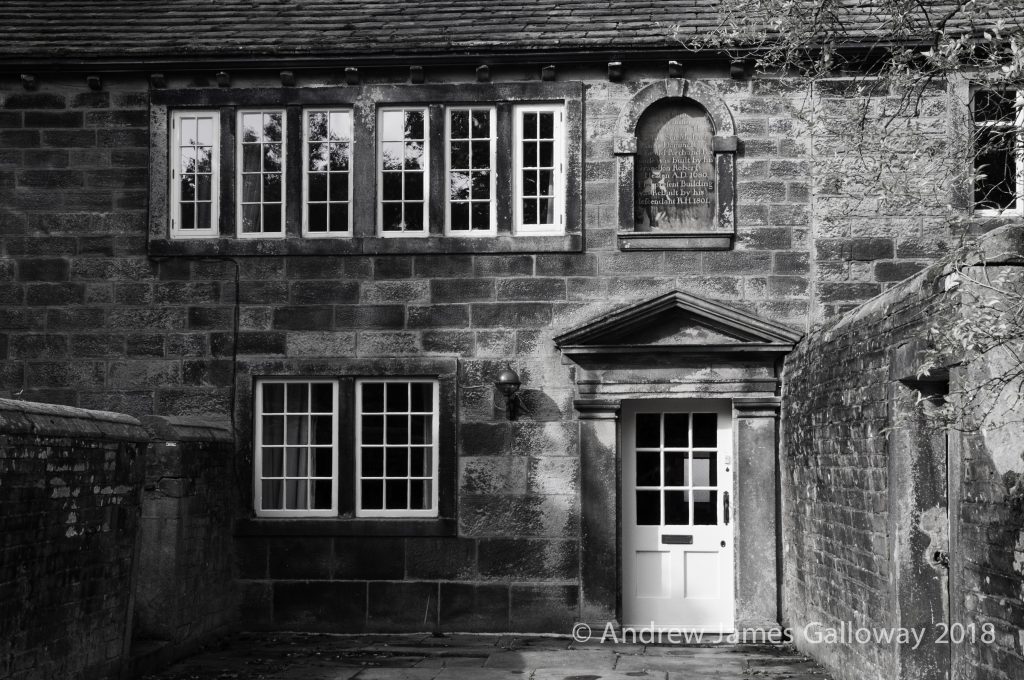
In the editor’s preface to the 1850 edition of Wuthering Heights, Charlotte Brontë made concession to “what are termed (and, perhaps, really are) its faults;” but it would be churlish to drag Emily Brontë through the mire of literary criticism without an acknowledgement of the fierce individuality of her work in a time when ‘authoress’ was considered to be an unwise occupation for a lady, particularly the daughter of a parson. Her genius was not solely in the telling of a story, for which she drew heavily on her Gondal epics, borrowed themes from her brother, creating a narrative that is sometimes incohesive and perhaps simplistic in characterisation. Her genius was in taking a scalpel to the conventionality and hypocrisy of nineteenth century society, in portraying the often brutal reality of life as it was for the inhabitants of the Yorkshire moors at a time of great industrial and social upheaval. To quote the biographer Winifred Gerin, Emily possessed an “attitude of defiance towards the social, and even more towards the national, traditions of the English novel.” More vociferously, as her sister Charlotte proclaimed in the preface to the 1847 edition of Jane Eyre, in defence of those critics who believed the Brontës to be immoral, “Conventionality is not morality. Self-righteousness is not religion. To attack the first is not to assail the latter.”
Although there are undoubted similarities between her novel and the landscape of the Haworth Moors, in the lives of those who were witness to the gradual demise of the stone house and the way of life that went with it, in reality, Wuthering Heights only ever existed in the imagination of Emily Brontë. And whatever her inspiration, if there is an association with the farm building of Top Withens, if there is a thread that, even today, binds fact and fiction together, poetry and prose, joy and tragedy; it is because we have made it thus. Ellen Nussey, Edward Wimperis, Ted Hughes, Sylvia Plath, Jane Urquhart, Glyn Hughes and every one of us who has ever made the rough journey, with a sad heart, along Sladen Beck, through the landscape that now bears her name, to the top of that stark, rain bleached moor and stood among the pitiless sheep, and the truncated ruins of Wuthering Heights, wishing the fiction could, just for one moment, be made real.
[i]Brontë, Patrick ‘The Phenomenon; or an account in verse of the extraordinary disruption of a bog which took place in the moors of Haworth’ printed by T. Inkersley, 1824 – in the care of the Brontë Parsonage Museum.
[ii]Brierley, Harwood ‘The Swamp of “Wuthering Heights” Scene of the Bog-Burst Patrick Brontë preached on.’Leeds Mercury, 6th August 1928 – from C.M. Edgerley’s scrap books in the care of the Brontë Parsonage Museum.

